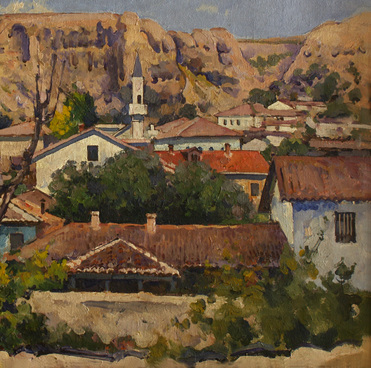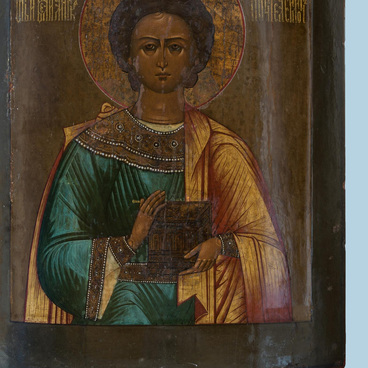This image, revered in Russia, has a centuries-old history and is associated with the no less famous Vladimir Icon of the Mother of God. The icon’s journey from Vyshgorod near Kyiv to the Suzdal land was marked by miracles. Seven versts (a verst is a Russian measure of length, about 1.1 km) from Vladimir, the horses carrying the icon case with the image stopped and could not move further. Prince Andrey of Bogolyubovo (Andrew I) prayed to the Mother of God for a long time in front of the Vladimir Icon, after which the Virgin appeared with a scroll in Her hand and ordered Her image brought from Vyshgorod to be kept in Vladimir and a monastery to be built on the site of Her appearance.
On the instructions of the Virgin, Prince Andrew built the Church of the Nativity of the Virgin on the site of Her appearance, around which a monastery was later formed. It still exists today. By order of the prince, icon painters depicted this episode with the Mother of God that had appeared to him: it was a full-length image; She held a scroll in Her hand. The prince placed the icon in the newly built church of the future monastery.
The place where the monastery was located, and the town that arose around it, Prince Andrew called Bogolyubovo from the Russian “bog” and “lubit” — meaning “to love God”. In his words, “The Mother of God loved this place.” Hence, the icon that depicted this event was called the Bogolyubovo Icon of the Mother of God. The most pious Prince Andrew was also later known as Bogolyubsky or Andrey of Bogolyubovo.
Over time, the Bogolyubovo image became known for many miracles and spread throughout Russia in multiple copies. The icon presented in the exhibition differs from the original: the Virgin is depicted from the waist up, so it is a waist-length image.
The background of the preserved part of the icon is
decorated with embossing on gesso (levkas), covered with tin-based paint and
drying oil. This combination allowed icon painters to imitate gold. The face of
the Virgin is painted relatively simply, without using “melting” tonal
transitions (a technique in which paint strokes are more liquid and melt into
one another): there is a distinct difference in the tones of the sankir (the
ocher shades that are used as a base for the face and hands) and the next
layer. The protruding parts of the face (the forehead, lower eyelids,
cheekbones, nose, and lips) are highlighted with strokes of diluted whitewash.
The face and the eyes of the Mother of God are calm and prayerfully focused.
Around the head of the Virgin is a metal corolla made of copper alloy with a
hammered decorative motif.


